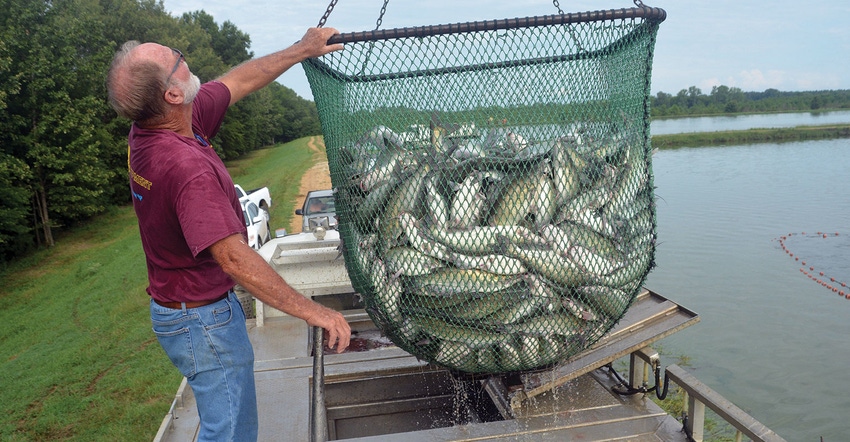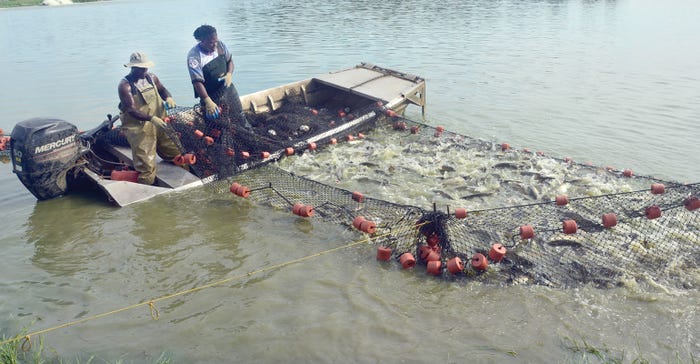August 7, 2018

An abundance of U.S. farm-raised catfish has driven prices down and delayed independent growers from getting their fish to the processors.
Jimmy Avery, a professor with the Mississippi State University Extension Service and director of the Thad Cochran National Warmwater Aquaculture Center in Stoneville, Miss., said small changes by producers can create an oversupply.
“Even a small increase of just 3 to 5 percent more catfish can lead to a glut of fish sitting in ponds,” Avery said. “The current oversupply may be based on intensification, an increase in acreage and an increase in yield per acre.”
Avery said the national catfish pond acreage on Jan. 1 totaled 61,900 acres, up 2 percent from 60,800 acres the previous year. Mississippi catfish acreage increased from 34,400 acres in 2017 to 36,100 acres in 2018.
“Most catfish plants have their own acreage, and during an oversupply, they begin to process their own fish first, only buying from outside sources when needed. The delay in getting fish to market is resulting in farmers having to hold fish, leading to longer feeding times and larger fish,” Avery said.
Big fish are having multiple impacts on farmers and processors.
“The dockage or discount paid for fish over 4 pounds is really driving down the final price growers receive for a load of fish,” he said. “Some plants are not paying for any fish over 4 pounds. It is hard to capture the economic impact of not getting paid for large fish since they do not show up in the average price.”
Avery said keeping fish on a maintenance diet results in a lower dress-out percentage, hurting processor margins.
“During May, the overall weighted price was 94.1 cents per pound for very small, premium, and very large sizes,” he said. “The average price paid to producers was 98 cents per pound for premium-sized, live fish (1 to 4 pounds), down 18.4 cents from May 2017.”

Michael “D.D.” Scott, left, and Michael Barber draw the net around hybrid catfish in a Noxubee County, Miss., pond on July 11, 2018.
Avery said the price paid per pound was 58.8 cents for the very large (more than 4 pounds) fish, and these fish made up 10.8 percent of all fish purchased from producers in May 2018.
MSU aquaculture scientist and economist Ganesh Kumar said catfish need about 18 to 24 months to reach market size, making it difficult for the producers to make quick production changes on catfish farms. When producers are unable to move their marketable size fish off from ponds, fish stocking gets delayed causing management issues in subsequent production cycles.
“Catfish cost about $1 per pound to produce, and the current price trend creates cash flow and liquidity issues,” Kumar said. “The realized price can be even less if they are docked for large fish.”
Kumar, an assistant research professor at the Delta Research and Extension Center, said the primary costs of production are feed, labor and electricity.
“Although lower grain prices are providing some relief to catfish feed prices, operating costs on catfish farms continue to be high, often forcing producers to rely on suboptimal practices like feeding below what is required,” he said.
About the Author(s)
You May Also Like






